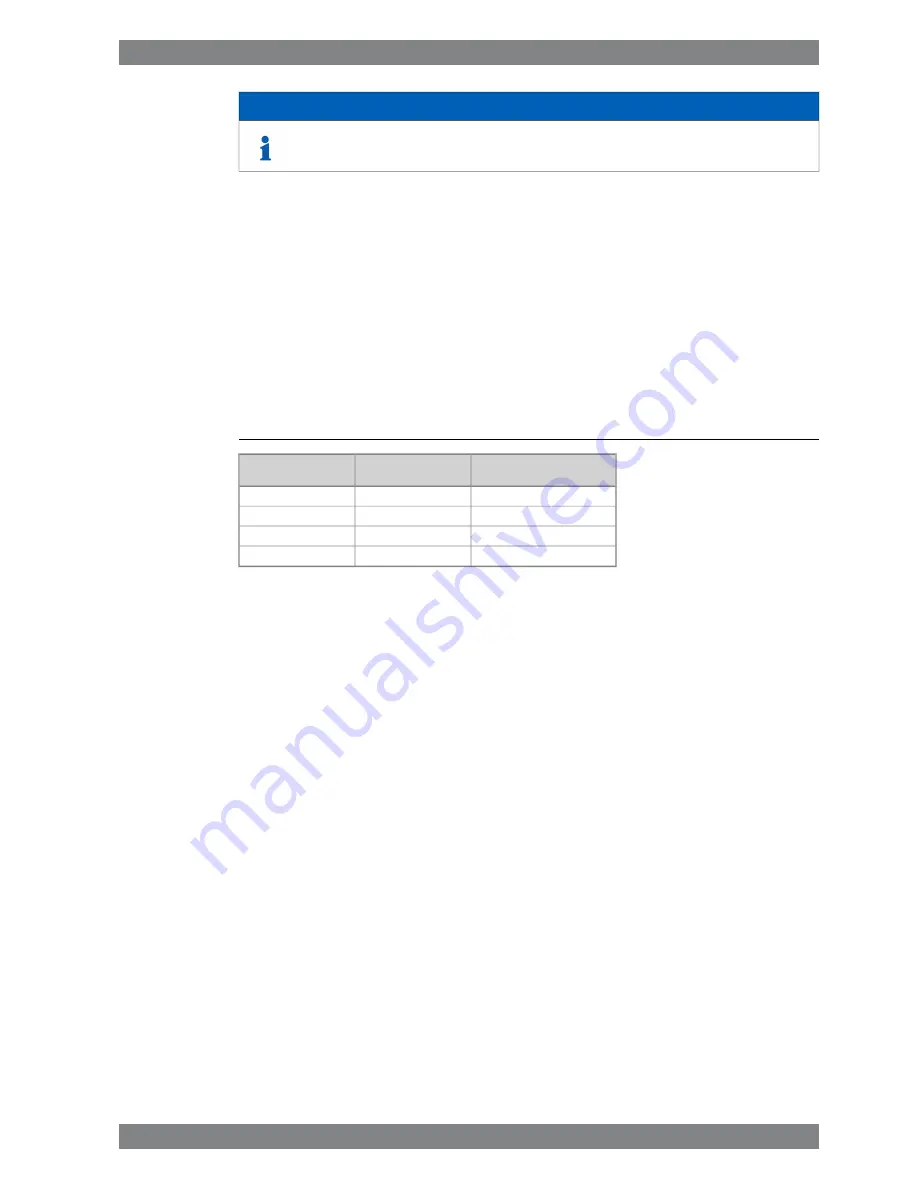
NOTE
The maximum pressure at the engine must not be exceeded in case an electrically
driven pump is installed significantly higher than the engine.
Concerning the water volume in the engine, see chapter Technical data.
The expansion tank should be equipped with an inspection hatch, a level gauge, a low level
alarm and necessary means for dosing of cooling water additives.
The vent pipes should enter the tank below the water level. The vent pipes must be drawn
separately to the tank (see air venting) and the pipes should be provided with labels at the
expansion tank.
The balance pipe down from the expansion tank must be dimensioned for a flow velocity not
exceeding 1.0...1.5 m/s in order to ensure the required pressure at the pump inlet with engines
running. The flow through the pipe depends on the number of vent pipes to the tank and the
size of the orifices in the vent pipes. The table below can be used for guidance.
Table 9-1
Minimum diameter of balance pipe
Max. number of vent pipes
with ø 5 mm orifice
Max. flow velocity (m/s)
Nominal pipe size
3
1.1
DN 32
6
1.2
DN 40
10
1.3
DN 50
17
1.4
DN 65
9.3.12
Drain tank (4T04)
It is recommended to collect the cooling water with additives in a drain tank, when the system
has to be drained for maintenance work. A pump should be provided so that the cooling water
can be pumped back into the system and reused.
Concerning the water volume in the engine, see chapter Technical data. The water volume in
the LT circuit of the engine is small.
9.3.13
Preheating
The cooling water circulating through the cylinders must be preheated to at least 60 ºC,
preferably 70 ºC. This is an absolute requirement for installations that are designed to operate
on heavy fuel, but strongly recommended also for engines that operate exclusively on marine
diesel fuel.
The energy required for preheating of the HT cooling water can be supplied by a separate
source or by a running engine, often a combination of both. In all cases a separate circulating
pump must be used. It is common to use the heat from running auxiliary engines for preheating
of main engines. In installations with several main engines the capacity of the separate heat
source can be dimensioned for preheating of two engines, provided that this is acceptable
for the operation of the ship. If the cooling water circuits are separated from each other, the
energy is transferred over a heat exchanger.
9.3.13.1
Heater (4E05)
The energy source of the heater can be electric power, steam or thermal oil.
It is recommended to heat the HT water to a temperature near the normal operating
temperature. The heating power determines the required time to heat up the engine from cold
condition.
Wärtsilä 32 Product Guide - a21 - 7 September 2016
9-17
9. Cooling Water System
Wärtsilä 32 Product Guide
Summary of Contents for WARTSILA32
Page 18: ...This page intentionally left blank...
Page 72: ...This page intentionally left blank...
Page 130: ...This page intentionally left blank...
Page 150: ...This page intentionally left blank...
Page 186: ...This page intentionally left blank...
Page 204: ...This page intentionally left blank...
Page 210: ...This page intentionally left blank...
Page 216: ...This page intentionally left blank...
Page 238: ...This page intentionally left blank...
Page 246: ...This page intentionally left blank...
Page 248: ...This page intentionally left blank...
Page 251: ......
Page 252: ......
Page 253: ......
















































